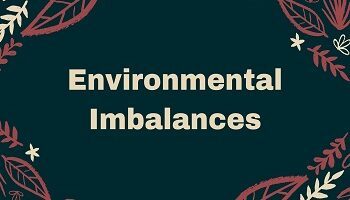Table of Contents
Energy Sources- Important Facts:

Energy is required for all activities. It is needed to cook, to provide light and heat, to propel vehicles, and to drive machinery in industries.
Energy sources can be classified as renewable and non-renewable resources.
Renewable Resources:
- Also called a non-conventional source of energy.
- Renewable resources can be generated continuously in nature and are inexhaustible.
- Example- solar energy, wind energy, tidal energy, hydropower, biomass energy, geothermal energy, biofuels, nuclear or atomic energy, etc.
Solar Energy:
- India is a tropical country. It has enormous possibilities for tapping solar energy.
- Photovoltaic technology converts sunlight directly into electricity.
- Photovoltaic cells also called Solar cells are made of thin wafers of semiconductor materials like silicon and gallium.
- Solar cells are widely used in calculators, electronic watches, street lighting, traffic signals, water pumps, etc.
Wind Power:
- India now ranks as a ‘wind super power‘ in the world.
- The high-speed winds have a lot of energy in them as kinetic energy due to their motion.
- The driving force of the winds is the sun.
- The wind energy is harnessed by making use of windmills.
- A large number of windmills are installed in clusters called wind farms.
- The largest wind farm cluster is located in Tamil Nadu from Nagarcoil to Madurai.
- Nagarcoil and Jaisalmer are well known for the effective use of Wind Energy in the country.
- Wind Farms are ideally located in coastal regions, open grasslands, or hilly regions where the winds are strong and steady.
Biogas:
- Biogas is a mixture of methane, carbon dioxide, hydrogen and hydrogen sulphide, the major constituent being methane.
- Biogas is produced by anaerobic (in absence of oxygen) degradation of animal wastes (sometimes plant wastes) in the presence of water.
- Decomposition of organic matter yields gas, which has higher thermal efficiency in comparsion to kerosene, dung cake and charcoal.
- The plants using cattle dung are known as ‘Gobar gas plants‘in rural India.
BioFuels:
- Biomass can be fermented to alcohols like ethanol and methanol which can be used as fuels.
Tidal Energy:
- Ocean tides produced by gravitational forces of sun and moon contain enormous amounts of energy.
- Oceanic tides can be used to generate electricity.
- In India, Gulf of Cambay, Gulf of Kutch and the Sunderbans deltas are the tidal power sites.
Geothermal Energy:
- The energy harnessed from the hot rocks present inside the earth is called geothermal energy.
- Two experimental projects have been set up in India to harness geothermal energy. One is located in the Parvati Valley near Manikarn in Himachal Pradesh and the other is located in the Puga Valley, Ladakh.
Nuclear Energy:
- It is obtained by altering the structure of atoms.
- Uranium and Thorium, which are available in Jharkhand and the Aravalli ranges of Rajasthan are used for generating atomic or nuclear power.
- The Monazite sands of Kerala is also rich in Thorium.
- The first nuclear power station was setup at Tarapur near Mumbai in 1969.
- The highly destructive atom bomb is based on the nuclear fission reaction of uranium-235. It is a chain reaction.
- Father of the atomic bomb- J. Robert Oppenheimer.
- The highly destructive hydrogen bomb is based on the nuclear fusion reactions of heavy hydrogen atoms (deuterium atoms) to form helium atoms, producing a great amount of energy in a very short time.
- Father of the hydrogen bomb- Edward Teller.
- Sun uses hydrogen gas as fuel to produce its energy by the nuclear fusion reactions.
Non-Renewable Resources:
- Also called as conventional source of energy.
- Non-renewable resources which have accumulated in nature over a long span of time and cannot be quickly replenished when exhausted.
- Example- coal, petroleum, natural gas etc.
Coal:
- Coal is an inflammable organic substance composed mainly of hydrocarbons.
- Coal is available in the form of sedimentary rocks.
- Coal was formed 255-350 million years ago in the hot, damp regions of the earth during the carboniferous age.
- Coal is found in a variety of forms depending on the degrees of compression and the depth and time of burial.
- Decaying plants in swamps produce peat (60% carbon, brown coal).
- Lignite (70% carbon) is a low grade black brown coal, which is soft with high moisture content. The principle lignite reserves are in Neyveli in Tamil Nadu.
- Coal that has been buried deep and subjected to increased temperatures is bituminous (soft coal, 80% carbon, black coal ) coal.
- Metallurgical coal is high-grade bituminous coal.
- Anthracite (90% carbon) is the highest quality hard coal.
- In India, coal occurs in rock series of two main geological ages, namely Gondwana, a little over 200 million years in age, and in tertiary deposits which are only about 55 million years old.
- The major resources of Gondwana coal, which are metallurgical coal, are located in Damodar valley (West Bengal-Jharkhand).
- Jharia, Raniganj, Bokaro are important coalfields.
- The Godavari, Mahanadi, Son, and Wardha valleys also contain coal deposits.
- Tertiary coals occur in the northeastern states of Meghalaya, Assam, Arunachal Pradesh, and Nagaland.
Petroleum:
- The word petroleum has been derived from two Latin words petro (meaning Rock) and oleum (meaning oil). Thus petroleum is oil obtained from rocks of the earth. Therefore, it is also called mineral oil.
- Crude petroleum is a complex mixture of alkane hydrocarbons. Hence it has to be purified and refined by the process of fractional distillation.
- Most of the petroleum occurrences in India are associated with anticlines and fault traps in the rock formations of the tertiary age.
| Western coast offshore oil fields | Eastern coast offshore oil Fields |
|---|---|
| Mumbai high oil fields (largest 65%) | Bharmaputra valley (Dibrugarh and Sibsagar districts of upper Assam.) |
| Gujarat coast (2nd largest) | Digboi oil feilds (oldest fields in country) |
| Basseim oil feild, south of Mumbai high | Nahoratiya oil fields (south west of digboi) |
| Aliabet oil feild, south of Bhavanagar | Moran-Hugrijan oil field (Southwest of Nahoratiya) |
| Ankleshwar | Rudrasagar-Lawa oil feilds (sibsagar districs of assam) |
| Cambay-Luni Region | Surrma valley (Badarpur, Masimpur, Patharia) |
| Ahemedabad-Kalol Region | offshore of Andaman and Nicobar, Gulf of mannar, Baleshwar coast, Punjab, Haryana and Uttar Pradesh. |
Natural Gas:
- Natural gas is mainly composed of methane (95%) with small amounts of propane and ethane.
- Natural gas is the cleanest fossil fuel.
- Large reserve of natural gas have been discovered in the Krishna-Godavari basin.
- Andaman and Nicobar islands are also important areas having large reserves of natural gas.
- Compressed Natural Gas (CNG) is being used as an alternative to petrol and diesel for transport of vehicles.








Comments (No)